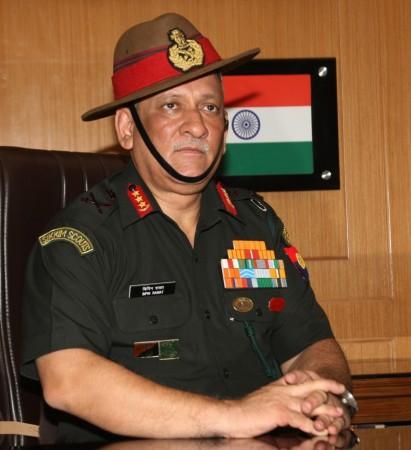
Lieutenant General Bipin Rawat, who is currently the vice-chief of the Indian Army, was chosen as the next army chief of India on Saturday after General Dalbir Singh steps down on December 31. The government, with the appointment of Rawat as the next army chief, did away with the 30-year-old tradition of elevating senior-most officers as service chiefs.
Lt Gen Rawat beat Eastern Army Commander Lt Gen. Praveen Bakshi and Southern Army Commander Lt. Gen. PM Hariz to become the next army chief of India. He will assume the post of the army chief from January 1, 2017 after General Dalbir Singh steps down from the post.
Here are 11 things you should know about Lieutenant General Bipin Rawat.
- Lt Gen Rawat joined the Indian Army in December 1978.
- He had won the Sword of Honour when he graduated from the Indian Military Academy in 1978.
- He is also a graduate from Wellington's Defence Services Staff College and the Higher Command Course at Fort Leavenworth, USA.
- Rawat's father was also a lieutenant general in the army.
- Rawat belongs to the 5th Battalion of the 11th Gorkha Rifles and is the second consecutive chief.
- He has a lot of experience in high altitude warfare and counter insurgency operations.
- He has held several important positions like commanding a Multinational Brigade in a Chapter VII mission in the Democratic Republic of Congo (MONUC), leading an Infantry battalion along the Line of Actual Control in the Eastern Sector and Major General General Staff at HQ Eastern Command.
- Rawat was awarded the Force Commander's Commendation twice while serving the United Nations.
- Before he was appointed as the vice army chief of India, Rawat was commanding the Southern Command in Pune.
- Rawat had once miraculously survived a helicopter accident when he was the commander of Headquarters 3 Corps in Dimapur.
- Rawat was applauded for his dynamic leadership of the Indian brigade during the UN peacekeeping operation in the Democratic Republic of the Congo in 2008. The Indian brigade, which gave a splendid performance during the operation, had changed their approach to an iron fist from a velvet glove under Rawat's leadership.

















